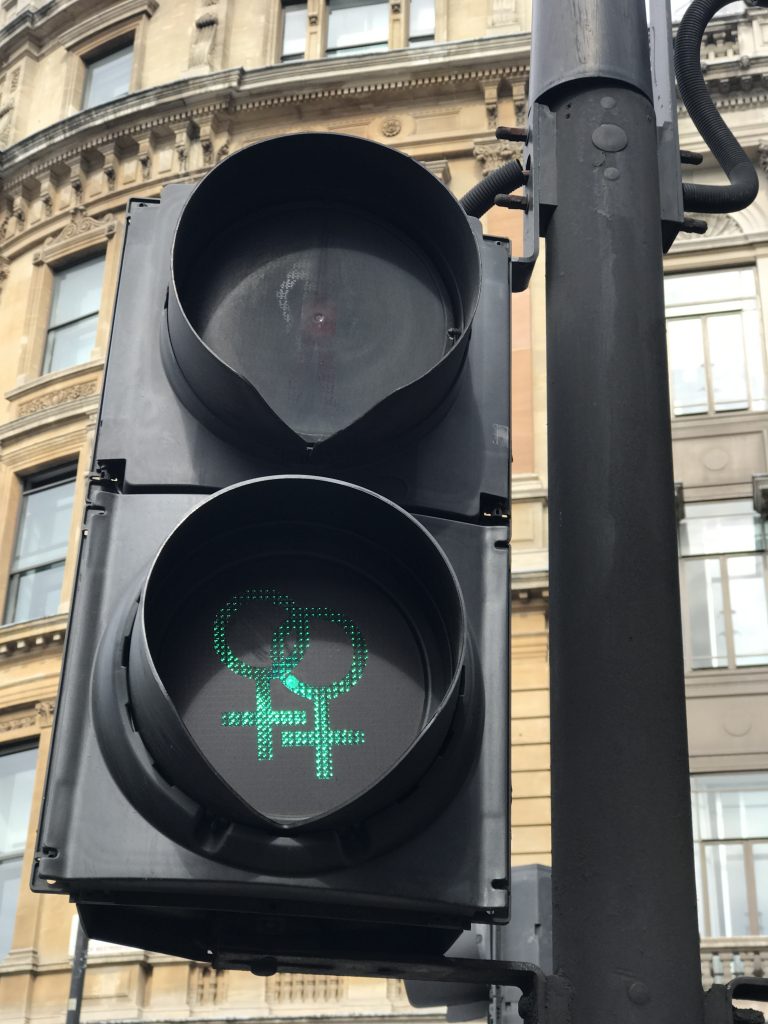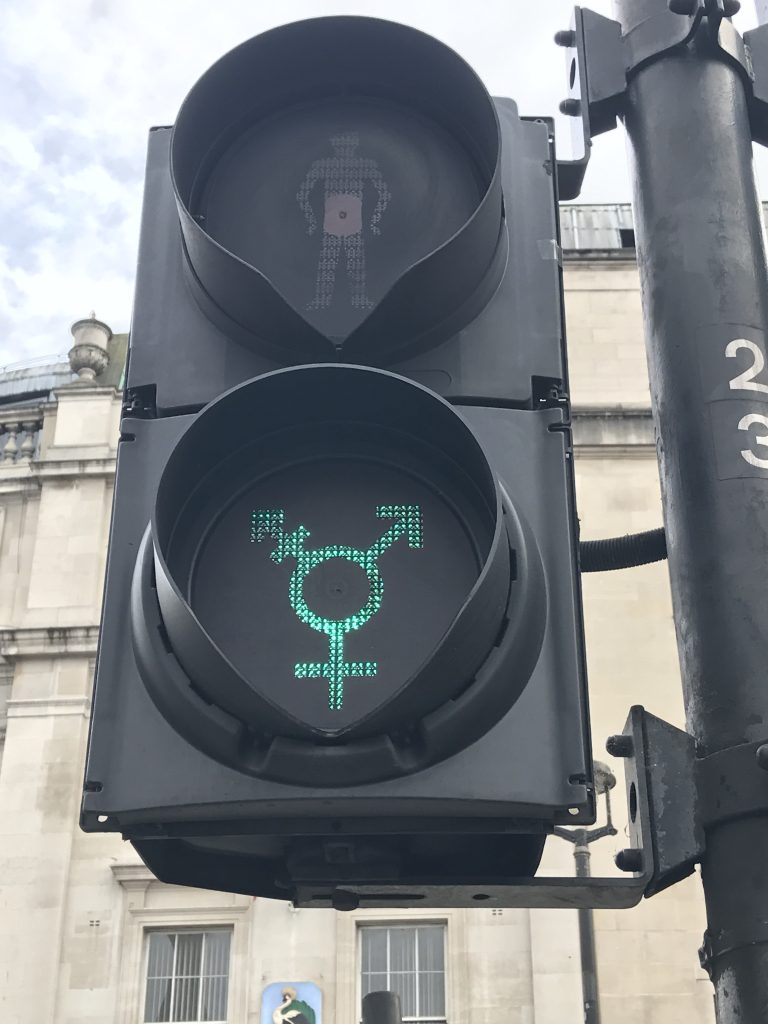Eye week started off with a two-hour dissection of the orbit (cavity of the eyeball). We used bone chisels to open the orbit and remove an eyeball by cutting the various ligaments and nerves anchoring it to the skull and brain. A human eyeball feels squishy but not delicate.
The eye comprises several layers: eyelid, cornea/sclera, iris, lens, retina, sclera (again). The eye lids contain conjunctiva epithelia which is continuous with the white outer sclera of the eyeball. The sclera is a white, fibrous connective tissue. The sclera merges with the cornea, a thin transparent convex protrusion that provides much of the optic refractive index of the eye. Behind the cornea is a cavity filled with aqueous humor, a watery secretion. The iris (colored portion of eye) is actually a muscle with radial and circular fibers that control the size of the pupil. The pupil is literally a hole in front of the lens. Light hits the cornea, enters the anterior (front) chamber, traverses through the pupil into the posterior chamber, and hits the lens to be focused on the retina, which is at the back of the vitreous chamber. Classmates, including myself, tended to hear the term “posterior chamber” (in front of the lens) and erroneously identify the much larger vitreous chamber (behind the lens).
Most of my anatomy group left early, but one classmate and I stayed to open the eyeball. We cut open the sclera with a scalpel and held the lens in our hands. It felt like a marble with an opaque yellowish tint. Several cadavers had artificial lenses, which felt surprisingly similar. The vitreous humor, inside the vitreous chamber, felt gelatinous. The retina looked like a white transparent sheet, except for a small protrusion on the medial aspect (closer to the nose) of the retina. This was the optic disk, where nerve fibers merge to exit the eye and the retinal artery enters the eye to supply the retinal layers with blood. The retina peeled off with forceps. We put the eye back together and placed it back in the orbit.
The retina, except at the optic disk, contains photosensitive compounds that transduce light into electrical signals. Rods, cells with the pigment rhodopsin, are sensitive to small amounts of light (as small as a single photon) and line most of the retina. Cones, cells with different photopigments excite depending on the specific wavelength (color), require larger amounts of delivered energy to activate. The density of photosensitive cells increase in an area of the macula with the highest density of cones in the fovea. Rods are important for night vision, while cones enable us to see color and detail.
A student asked, “What is the resolution of the eye?” Doctor J said this is hard to define. Each eye has 150 million photosensitive cells (rods and cones) [compare to 100 megapixels for the highest-resolution cameras circa 2017]. These signals converge onto 1.2 million ganglion cells that transmit the information via the optic nerve to the brain. Most of these ganglion cells originate from the fovea, a region the size of 1.5 mm. Image details are integrated by the primary visual cortex and visual association cortex. If you’re looking for something small at night, try scanning with your peripheral vision because the density of rods is higher outside of the fovea.
Our eyes have six extraocular muscles that provide the extraordinary range of motion of the eye. To support binocular vision and depth perception, the eyes have elaborate mechanisms to maintain foveation through the horizontal and vertical gaze centers in the brainstem. Strabismus (“cross eye”) is a misalignment of each eye causing an image to hit different parts of each retina. Strabismus causes diplopia (seeing double). Compression of one of the nerves that innervates these extraocular muscles can lead to diplopia when they gaze a certain direction.
Our patient case: George, 74-year-old white male with hypertension and hypercholesterolemia presents for blurry vision. An eye exam reveals intact extraocular muscles with decreased visual acuity. Inspection of the macula with an ophthalmoscope reveals the characteristic geometry of drusen (lipid deposits in the choroid vascular region deep to the photopigment layer).He is immediately referred to an ophthalmologist for Age-associated Macular Degeneration (AMD).
[AMD is the leading cause of vision loss for individuals, with white Americans being at high risk starting around age 65. Fifteen percent of white Americans over age 80 have AMD (https://nei.nih.gov/eyedata/amd). Type-A Anita muttered “white privilege” when we went over a clinical trial of a drug to treat AMD. Reflecting the higher prevalence among whites, the study had 93-percent white enrollment.]
The ophthalmologist performed an Optical Coherence Tomography (OCT), shooting low energy light (infrared) into George’s retina to create beautiful micron-resolution images of the retinal layers. The study revealed detachment of the macula due to wet AMD. The choroid plexus (blood vessels on the exterior of the retina that supplies the pigmented cells) began to grow into the photopigment layers causing microhemorrhages. George was fortunate to get this diagnosed before his whole macula became detached.
Every six weeks, George goes to his ophthalmologist for a shot of Bevacizumab (Avastin), which contains antibodies against vascular endothelial growth factor (VEGF). This drug is injected into his vitreous chamber to prevent the growth of the invading blood vessels. “These drugs have saved my vision. I am able to drive, read, really do everything I want to do.” George was going in this week to get his shot before departing on a cruise next week.
“VEGF treatment has really been a godsend,” explained the ophthalmologist. “It prolongs patients’ vision for years. For the unfortunate few who do not respond, there are some other options.” One was a telescope implant to replace the lens with a magnifying telescope that focuses an image on a different part of the macula that is healthy. Students dubbed this “going bionic”. A more drastic treatment option is macular rotation. Surgeons detach the retina and rotate is to have a new, more healthy vascular choroid plexus.
A student asked about the difference between Avastin, originally developed as a treatment for colon cancer, and Lucentis. Lucentis, FDA-approved to treat wet AMD, is a cleaved form of the anti-VEGF monoclonal antibody Avastin, at roughly 1/40th of the dosage used for colon cancer patients. Lucentis may be able to penetrate deeper into the retinal layers because of the antibody’s lower molecular weight. Lucentis costs $2,000 per dose, whereas the amount of Avastin necessary for wet AMD therapy costs $50. The ophthalmologist explained he always starts with off-label Avastin. “I have only anecdotal evidence that a few of my patients respond better to Lucentis.” [This makes sense given that the drugs are essentially chemically identical.] Genentech makes both Avastin and Lucentis. “Why would the company fund a multi-million dollar trial to approve a drug that costs less?” If all Medicare patients were prescribed Avastin instead of Lucentis, Medicare Part B is estimated to save $18 billion and patients save nearly $5 billion over a 10-year period (http://content.healthaffairs.org/content/33/6/931.abstract).
That evening, I spoke with some fourth-year medical students going into surgery about the match process. I learned that many general surgery (“Gen Surg”) residencies are trending towards the “5 + 2” option. Gen Surg residencies had typically been five years. After residency, you could then get a job, or apply to a 1-2 year fellowship (e.g., cardiothoracic, vascular, etc.). In order to make graduates more competitive when applying for fellowships, some prestigious surgery residencies are now requiring two years of research in the middle, hoping that the publication record will appeal to fellowship admissions committees. Thus what had been 4 years of medical school, plus 5 years of residency, plus up to 2 years of fellowship (11 years) might now turn into a 13-year training process.
An attending repeated his wish (see Week 8) that regulations would allow him to teach us more. “LCME caps the number of formal class hours at about 26-28. There just isn’t enough time to do extra projects, especially if they do not advance LCME-designated areas.” He told administration that he would even volunteer his time for optional events. “Administration responded by saying, ‘Students would complain that they feel obligated to go…’ Don’t we have capitalism? Instead of stooping to the lowest denominator, you work harder, get better, and make more money.”
At lunch, Type-A Anita lamented the loss of Obama. Several students agreed, but added, “Trump’s election is actually a blessing. Now we have unprecedented activism against racism and sexism. In the long run this will be good.” Type-A Anita agreed, “But honestly, if we blow up the world?” They ended by saying how much they missed Obama’s dogs and looking at a Pinterest account of Merkel Faces.
Statistics for the week… Study: 10 hours. Sleep: 7 hours/night; Fun: 1 night. Example fun: Afternoon drinks at recently opened brewery. There must be six new breweries planning to open by the end of the year.
More: http://fifthchance.com/MedicalSchool2020
Full post, including comments 
